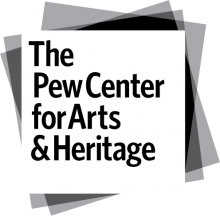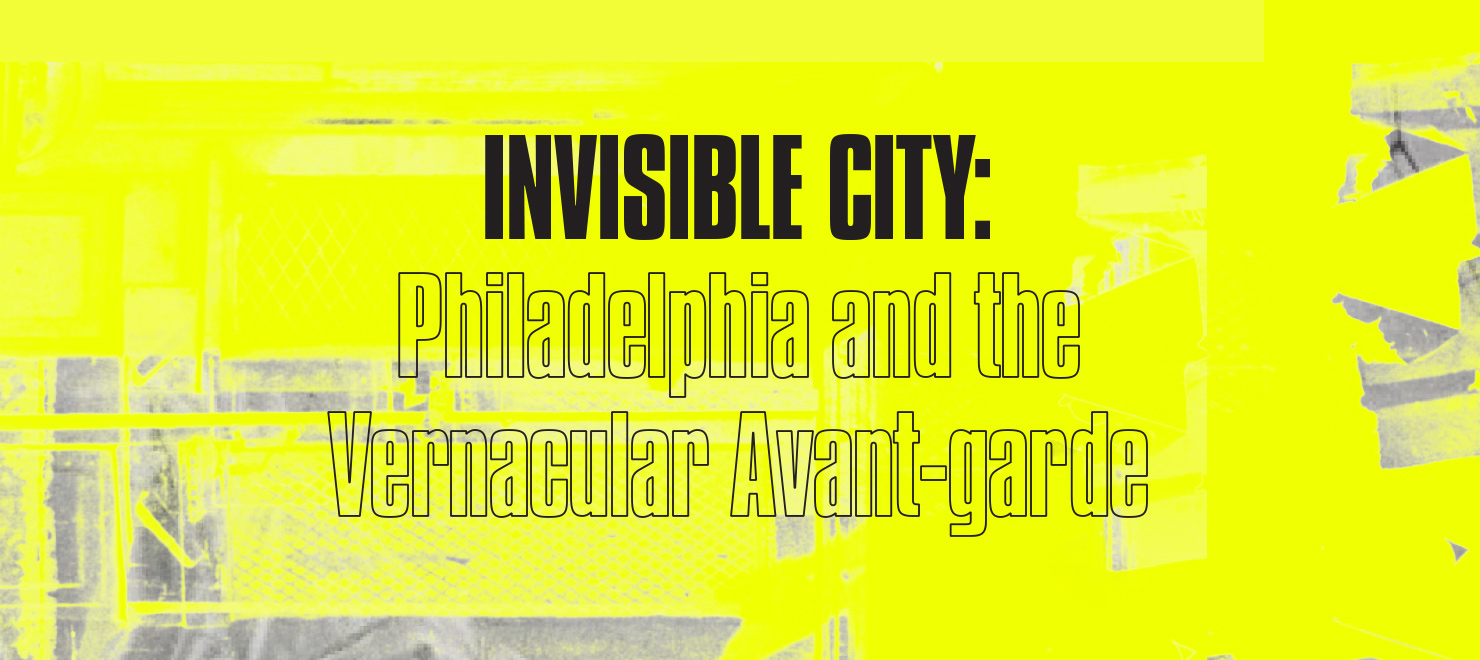
Invisible City: Philadelphia and the Vernacular Avant-garde highlighted Philadelphia’s significant contributions to visual, literary, and musical culture between 1956 and 1976. An interdisciplinary exploration that was centered at University of the Arts, Invisible City featured key works by the period’s major architects, photographers, sculptors, designers, painters and conceptual artists. The exhibition was organized by University of the Arts and curated by Sid Sachs, chief curator and director of exhibitions at University of the Arts with Jennie Hirsh, assistant curator, professor of Modern and Contemporary Art at MICA. Support for the research, development, and presentation of Invisible City was provided by The Pew Center for Arts & Heritage.
Invisible City: Philadelphia and the Vernacular Avant-garde
January 21- April 4, 2020
On view across four venues
Programs


(at Art Alliance)
Join us Thursday, Jan. 30, 2020 for the Public Opening of Invisible City and musical performance with Sue Ann Kahn, flute, Chris Finckel, cello and Andrew Willis, piano.
Thursday, Jan. 30, 2020
5-7 p.m. Opening Reception
7 p.m. Performance
Art Alliance at University of the Arts
251 S. 18th St.
Philadelphia, PA 19103
5-7pm Opening Reception | free and open to the public
Join us at the Art Alliance for the public opening of Invisible City: Philadelphia and the Vernacular Avant-garde. No RSVP is required.
7pm Performance | RSVP required; space is limited
Highlighting three of Philadelphia's major composers, the renowned musicians Sue Ann Kahn (flute), Chris Finckel (cello) and Andrew Willis (piano) present Music of Philadelphia's Masters: Persichetti, Rochberg and Crumb.
The evening's program includes:
Vince Persichetti, Serenade No. 3, Op. 17 (1941)
George Rochberg, Between Two Worlds (Ukiyo-e III), for flute and piano (1982)
George Crumb, Vox Balaenae (Voice of the Whale) for three masked players (1971)
Registration is required, as space is limited.
NOTE: Event is now full. Use the form below to join the waitlist.
Invisible City Public Opening and Performance
Music of the Philadelphia Masters: Persichetti, Rochberg and Crumb
Sue Ann Kahn, flute; Chris Finckel, cello; Andrew Willis, piano
Invisible City: Philadelphia and the Vernacular Avant-garde has been supported by The Pew Center for Arts & Heritage.
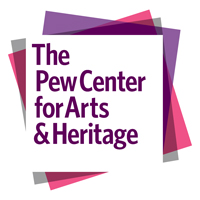


(at Art Alliance)
Join us Thursday, Feb. 6, 2020 as Viktor Bockris returns to Philadelphia to tell the dramatic story of the poetry scene in Philadelphia and New York from the mid-1950s to the early 1970s.
Thursday, Feb. 6, 2020, 6 p.m.
Art Alliance at University of the Arts
251 S. 18th St.
Philadelphia, PA 19103
Join us Thursday, Feb. 6, 2020 as Victor Bockris returns to Philadelphia to tell the dramatic story of the poetry scene in Philadelphia and New York from the mid-1950s to the early 1970s, touching upon his activities as a poet and publisher of Telegraph Books, a columnist for The Drummer and as a prolific author.
Talk is free and open to the public, though registration is requested. Light refreshments to follow.
Invisible City Programming Series
Victor Bockris was raised and educated in Philadelphia from the mid-1950s to the early 1970s, attending both Central High School and the University of Pennsylvania. As a writer at the center of the counterculture, his career began in earnest in Philadelphia in 1971 with Telegraph Books and continued to rise with editorial work for both Lip and Contact magazines. Dubbed the Poet Laureate of the New York Underground, Bockris has published seventeen books, including Warhol: The Biography, Muhammad Ali in Fighter's Heaven and With William Burroughs: A Report from the Bunker. Bockris maintained his connection to Philadelphia even after moving to New York, visiting regularly.


(at Art Alliance)
Join us Thursday, Feb. 13, 2020 as David Langstaff leads a panel discussion with local poets and critics, including Ashley Chang and Hiwot Adilow, that considers the mid-century avant-garde's legacy and contemporary expressions.
Thursday, Feb. 13, 2020, 6. p.m.
Art Alliance at University of the Arts
251 S. 18th St.
Philadelphia, PA 19103
Join us Thursday, Feb. 13, 2020 as David Langstaff leads a panel discussion with local poets and critics, including Ashley Chang and Hiwot Adilow, that considers the mid-century avant-garde's legacy and contemporary expressions. Panel is presented by Creative Writing at University of the Arts.
Panel is free and open to the public; registration is requested.
Invisible City Programming Series
Rethinking the Poetic Avant-garde
With UArts' Creative Writing Faculty David Langstaff


(at Art Alliance)
Join us Thursday, Feb. 20 as Sid Sachs presents his curatorial vision for 'Invisible City,' the largest exhibition of its kind since Three Centuries of American Art at the Philadelphia Museum of Art in 1976.
Thursday, Feb. 20, 2020, 6 p.m.
Art Alliance at University of the Arts
251 S. 18th St.
Philadelphia, PA 19103
Join us Thursday, Feb. 20 as Sid Sachs presents his curatorial vision for Invisible City, the largest exhibit of its kind since Three Centuries of American Art at the Philadelphia Museum of Art in 1976. In this richly illustrated lecture, Sachs offers an introduction to the cultural history and happenings of the city at mid-century, along with touchstone examples of art, architecture, craft and performance that advance the everyday as precursor to the imminent rise of postmodernism in America.
Talk is free and open to the public though registration is requested. Light refreshments to follow.
Invisible City Programming Series
Invisible City: Philadelphia and the Vernacular Avant-garde: Curatorial Visions
With Sid Sachs, Curator of Invisible City and Director of Exhibitions, Rosenwald-Wolf Gallery, University of the Arts


(at Art Alliance)
Join the Art Alliance Writers' Workshop and Lightbox Film Center at UArts on Thursday, Feb. 27, 2020 as we dive into noir writer David Goodis's The Burglar a story of love, seduction and betrayal among a family of thieves.
Thursday, Feb. 27, 2020, 6 p.m. screening; 7:30 p.m. book discussion
Art Alliance at University of the Arts
251 S. 18th St.
Philadelphia, PA 19103
Join the Art Alliance Writers' Workshop and Lightbox Film Center at University of the Arts on Thursday, Feb. 27, 2020 as we dive into noir writer David Goodis's The Burglar, a story of love, seduction and betrayal among a family of thieves.
The Film: Screening at 6 p.m.
Starring Dan Duryea as Nat Harbin, a professional thief, and Jayne Mansfield as his ward, The Burglar is the 1957 film adaption of David Goodis' Philadelphia noir. When Nat and his crew set their sights on a wealthy Philadelphia spiritualist and her prized bejeweled necklace, the robbery is the easiest part; tensions rise amongst the thieves and soon they are on the run from more than just the law.
Directed by Paul Wendkos and with a screenplay by David Goodis himself, The Burglar bears all the hallmarks of classic noir, Philadelphia-style.
The Book Club: Discussion at 7:30 p.m.
Stay tuned after the film for the book club discussion of The Burglar. Presented by the Art Alliance Writers' Workshop and in honor of the Invisible City exhibition, the book club explores the best-known work of David Goodis, who was one of the most prodigious noir-writers of his time and was known for his especially dark storylines. UArts Creative Writing Faculty and Art Alliance Writers' Workshop Coordinator Steven Kleinman will lead a discussion considering this short novel, its author and the film.
Copies of a collection of Goodis' stories, including The Burglar, are available for purchase at the Art Alliance. Kindle editions of the book can also be found online for purchase.
Invisible City Programming Series
With UArts Creative Writing Faculty Steven Kleinman
Lightbox Film Center at the University of the Arts presents an unparalleled slate of repertory, nonfiction, experimental and international cinema. Beyond the traditional movie theater experience, Lightbox delivers enriching film programs with artist talks, live music and other multi-disciplinary programs year-round.
The Art Alliance Writers' Workshop is a creative alternative to the traditional MFA writing program. It is an intensive one-year certificate program taught by leading University of the Art Creative Writing faculty that is completed on a part-time basis.
Steven Kleinman is a senior lecturer in Critical Studies and Creative Writing at University of the Arts and serves as coordinator for the Art Alliance Writers' Workshop. His poems and reviews have appeared in The American Poetry Review, The Gettysburg Review, The Iowa Review, Oversound, American Literary Review, Tikkun and other journals. He has received support from the Bread Loaf Writers' Conferences and he is a contributing editor at The American Poetry Review.


Join us for an exclusive performance of Allan Kaprow's 'Chicken' (1962), a happening reinvented by acclaimed artist Alex Da Corte. The performance is a part of the Invisible City Symposium, 'On Regionalism: Mid-century Art, Architecture and Culture in North America', which will include a keynote address by noted art historian and critic Thomas Crow.
Thursday, March 5, 2020
8pm | Registration Required
Gershman Hall, University of the Arts
In conjunction with University of the Arts’ exhibition Invisible City: Philadelphia and the Vernacular Avant-garde curated by Sid Sachs with Jennie Hirsh, Alex Da Corte and Kate Watson-Wallace will reinvent Kaprow's Chicken in the same location it was originally performed, now known as the Gershman Hall of University of the Arts.
Chicken variously dramatizes, commodifies and deconstructs the trope of the chicken. In 1962, the work was staged on ad-hoc wooden stands and booths with “pitchmen” plucking real chicken feathers, live chickens being vacuumed, people behaving like chickens, records with chicken sounds and so on. In 2020, Chicken no longer promises the "new vocabulary" it once did. Rather, Da Corte will stage a progressive, animal-friendly reconsideration of what the “avant-carnival” originally considered itself to be.
Chicken will feature Kristel Baldoz, Melanie Cotton, Danielle Currica, Julia Eichten, Jessica Emmanuel, Ya-Ya Fairley, Ann-Marie Gover, Imma, Andrew Smith, Kim Thompson, and Wilmer Wilson along with Kate Watson-Wallace and Alex Da Corte; with music composed by Marco Buccelli and Xenia Rubinos, performed with Sunny Ali and Karna Ray.
Chicken features a newly commissioned text by Rosalyn Drexler.
Support for the Invisible City Symposium and Chicken has been provided by the Edna W. Andrade Fund of the Philadelphia Foundation.
Support for the research, development and presentation of Invisible City has been provided by The Pew Center for Arts & Heritage.
8pm Thursday, March 5, 2020
Learn more about the symposium, On Regionalism here.


March 6 | 9am - 5pm Presentation of Papers (Registration Required)
UArts hosts On Regionalism: Mid-century Art, Architecture and Culture in North America, the Invisible City Symposium. Keynote address with Thomas E. Crow. Presentations by Ken Lum, Leah Modigliani, Bill Whitaker, Bob Cozzolino, Melissa Rachleff Burtt, Rachel Churner, and Suzanne Delehanty.
Join us March 5-6, 2020 for the Invisible City Symposium, On Regionalism: Mid-century Art, Architecture and Culture in North America, which will include a keynote address by noted art historian and critic Thomas Crow and an exclusive performance of Allan Kaprow's Chicken (1962), a happening reinvented by acclaimed artist Alex Da Corte.
Invisible City Symposium
On Regionalism: Mid-century Art, Architecture and Culture in North America
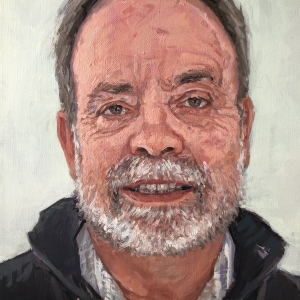
Thursday, March 5, 2020 | 5pm
Keynote Address with Art Historian and Critic, Thomas Crow
University of the Arts | Hamilton Hall | 320 S. Broad Street
Going from Scene to Scene: the Multiple Bruce Conners
Necessary attention to the many regional clusters of innovative art making understandably emphasizes networks of artists in a single geographical locus. It is rare for one artist to play a key role in more than one such scene. But the film and assemblage master Bruce Conner made a capital difference in at least three during the late 1950s and early 1960s, offering another kind of diagnostic insight into what made San Francisco, Los Angeles, and Boston both similar and different. Then, at the close of the 1970s, Conner shifted his medium to photography and his self-identification to the Punk style displacing his formative San Francisco bohemia.
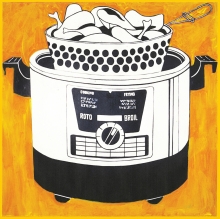
Thursday, March 5, 2020 | 8pm
Allan Kaprow's Chicken (1962), reinvented by Alex Da Corte
Separate Registration Required (more information & registration here)
On March 5th, 2020, in conjunction with the current show, Invisible City: Philadelphia and the Vernacular Avant-garde, organized by University of the arts and curated by Sid Sachs and Jennie Hirsh, Alex Da Corte and Kate Watson-Wallace will reinvent Kaprow's Chicken in the same location it was originally performed, now known as the Gershman Hall of the University of the Arts.
Friday, March 6, 2020 | 9am - 5pm
Presentation of Papers
Art Alliance at University of the Arts | 251. S. 18th Street
Session One:
9:00 am Arrival
9:30 am Introductory remarks, Sid Sachs, Director of Exhibitions & Chief Curator
10:00 am Ken Lum
10:35 am Leah Modigliani
11:10 am Bill Whitaker
11:45 am Robert Cozzolino
Register for Session One | morning
Session Two:
2pm Afternoon Introduction, Jennie Hirsh, Assistant Curator
2:15pm Melissa Rachleff Burtt
2:50pm Rachel Churner
3:25pm Suzanne Delehanty
4pm Round Table with speakers, moderated by Sid Sachs and Jennie Hirsh
Register for Session Two | afternoon
The Invisible City Symposium is supported by Edna W. Andrade Fund of the Philadelphia Foundation.


In an effort to help maintain the health and safety of our community, we have canceled all remaining public programs and reduced our gallery hours for Invisible City: Philadelphia and the Avant-garde.
In an effort to help maintain the health and safety of our community, we have canceled all remaining public events for Invisible City: Philadelphia and the Avant-garde and temporarily closed our galleries.
This includes:
March 19: Modern and Contemporary American Craft: Jennie Hirsh in Conversation with Helen Williams Drutt English
March 26: Invisible City: Philadelphia and the Vernacular Avant-garde Panel Discussion: Women of the Avant-garde
March 28: Modern Architecture Walking Tour with William Whitaker, Curator of Penn's Architectural Archives
April 2: An Evening of Poetry with Professor Daisy Fried and 'Invisible City' Poetry Award Winners
For questions or concerns, email rwg@uarts.edu or call 215–717–6480.
For more information about this exhibit, visit: uarts.edu/invisiblecity.
Thursday, March 19, 2020 at 6 p.m.
Art Alliance at University of the Arts
251 S. 18th Street
Philadelphia, PA 19103
Join us Thursday, March 19, 2020 as Invisible City Assistant Curator and MICA Professor Jennie Hirsh holds a conversation with world-renowned craft scholar and former gallerist Helen Williams Drutt English, revisiting her experiences as a pioneering champion of craft and a member of the Y Arts Council during this pivotal period in the city.
Invisible City Programming Series
Modern and Contemporary American Craft: Jennie Hirsh in Conversation with Helen Williams Drutt English
Jennie Hirsh is a Professor of Modern and Contemporary Art at Maryland Institute College of Art (MICA) in Baltimore and the assistant curator of Invisible City.
Helen Williams Drutt English is world renowned for her significant and continued commitment to the advancement and awareness of the Modern and Contemporary Craft Movement. As a celebrated author, lecturer, curatorial consultant, collector and former gallerist, her contributions have been vast, with scholarship and education being at the heart of all her endeavors.


In an effort to help maintain the health and safety of our community, we have canceled all remaining public programs and reduced our gallery hours for Invisible City: Philadelphia and the Avant-garde.
In an effort to help maintain the health and safety of our community, we have canceled all remaining public events for Invisible City: Philadelphia and the Avant-garde and temporarily closed our galleries.
This includes:
March 19: Modern and Contemporary American Craft: Jennie Hirsh in Conversation with Helen Williams Drutt English
March 26: Invisible City: Philadelphia and the Vernacular Avant-garde Panel Discussion: Women of the Avant-garde
March 28: Modern Architecture Walking Tour with William Whitaker, Curator of Penn's Architectural Archives
April 2: An Evening of Poetry with Professor Daisy Fried and 'Invisible City' Poetry Award Winners
For questions or concerns, email rwg@uarts.edu or call 215–717–6480.
For more information about this exhibit, visit: uarts.edu/invisiblecity.
Thursday, March 26, 2020, 6 p.m. Roundtable Discussion
Art Alliance at University of the Arts
251 S. 18th St.
Philadelphia, PA 19103
Join us on Thursday, March 26, 2020 as Art Historian and Invisible City co-curator Jennie Hirsh hosts a panel featuring veteran Y Arts Council members Joan Kron, Eileen Rosenau and Janet Kardon. In this conversation these trailblazing women will review their experiences as tireless proponents of cutting-edge exhibitions, concerts and other events connected to the Gershman YMHA/YWHA in the 1960s and the larger avant-garde moment.
Invisible City Programming Series
Invisible City: Philadelphia and the Vernacular Avant-garde Panel Discussion: Women of the Avant-garde
With Art Historian and Invisible City co-curator Jennie Hirsh in conversation with Joan Kron, Eileen Rosenau, Janet Kardon


In an effort to help maintain the health and safety of our community, we have canceled all remaining public programs and reduced our gallery hours for Invisible City: Philadelphia and the Avant-garde.
In an effort to help maintain the health and safety of our community, we have canceled all remaining public events for Invisible City: Philadelphia and the Avant-garde and temporarily closed our galleries.
This includes:
March 19: Modern and Contemporary American Craft: Jennie Hirsh in Conversation with Helen Williams Drutt English
March 26: Invisible City: Philadelphia and the Vernacular Avant-garde Panel Discussion: Women of the Avant-garde
March 28: Modern Architecture Walking Tour with William Whitaker, Curator of Penn's Architectural Archives
April 2: An Evening of Poetry with Professor Daisy Fried and 'Invisible City' Poetry Award Winners
For questions or concerns, email rwg@uarts.edu or call 215–717–6480.
Saturday, Mar. 28, 2020, 2 p.m. Tour; Afternoon Tea immediately following
Meeting on the Southwest corner of Fitler Square
Ending at the Art Alliance at University of the Arts
251 S. 18th St.
Philadelphia, PA 19103
Join us at 2 p.m. on Saturday, Mar. 28, 2020 for a two-hour walking tour, "Modern Architecture & Rittenhouse Square" led by William Whitaker, Curator of Penn's Architectural Archives. Beginning at the Southwest corner of Fitler Square and ending at the Art Alliance, the tour concludes with afternoon tea at the newly renovated Art Alliance.
Invisible City Programming Series
Architectural Walking Tour: Modern Architecture and Rittenhouse Square
With William Whitaker, Curator of University of Pennsylvania's Architectural Archives
William Whitaker was trained as an architect and architectural historian at the University of New Mexico and the University of Pennsylvania. Whitaker primarily works on documenting and interpreting Penn's design collections, including holdings related to the life and work of architect Louis I. Kahn and landscape architect Lawrence Halprin, as well as that of the husband and wife team of Robert Venturi and Denise Scott Brown.


In an effort to help maintain the health and safety of our community, we have canceled all remaining public programs and reduced our gallery hours for Invisible City: Philadelphia and the Avant-garde.
In an effort to help maintain the health and safety of our community, we have canceled all remaining public events for Invisible City: Philadelphia and the Avant-garde and temporarily closed our galleries.
This includes:
March 19: Modern and Contemporary American Craft: Jennie Hirsh in Conversation with Helen Williams Drutt English
March 26: Invisible City: Philadelphia and the Vernacular Avant-garde Panel Discussion: Women of the Avant-garde
March 28: Modern Architecture Walking Tour with William Whitaker, Curator of Penn's Architectural Archives
April 2: An Evening of Poetry with Professor Daisy Fried and 'Invisible City' Poetry Award Winners
For questions or concerns, email rwg@uarts.edu or call 215–717–6480.
Thursday, April 2, 2020, 6 p.m. Program, 7:30 p.m. Reception
Art Alliance at University of the Arts
251 S. 18th St.
Philadelphia, PA 19103
Join the Art Alliance Writer's Workshop on Thursday, April 2, 2020 for an evening of poetry, as Professor and scholar Daisy Fried discusses the work of Philadelphia poet C.K. Williams followed by a poetry reading with the winners of the Invisible City Poetry Competition inspired by the exhibition and C.K. Williams.
Read more about the Invisible City Poetry Competition and enter here.
Invisible City Programming Series
An Evening of Poetry: Discussion of C.K. Williams and Readings by Invisible City Poetry Award Winners
With Professor, Scholar and Poet Daisy Fried
The Art Alliance Writers' Workshop is a creative alternative to the traditional MFA writing program. It is an intensive one-year certificate program taught by leading University of the Arts Creative Writing faculty that is completed on a part-time basis.
Daisy Fried is the author of three books of poetry: Women's Poetry: Poems and Advice, My Brother is Getting Arrested Again, a finalist for the National Book Critics Circle Award, and She Didn't Mean to Do It. She has been awarded Guggenheim, Hodder and Pew Fellowships, a Pushcart Prize, the Cohen Award from Ploughshares and the Editors Prize for a feature article from Poetry magazine. She is poetry editor for the literary resistance journal Scoundrel Time and teaches creative writing at University of the Arts and through the Warren Wilson College MFA Program for Writers. She lives in Philadelphia.
Exhibition Overview
Invisible City: Philadelphia and the Vernacular Avant-garde highlights Philadelphia’s significant contributions to visual, literary, and musical culture between 1956 and 1976. An interdisciplinary exploration that is centered at University of the Arts across three venues––Rosenwald–Wolf Gallery, the Philadelphia Art Alliance, and Gershman Hall––as well as the Pennsylvania Academy of the Fine Arts, the project invites audiences to envision Philadelphia as “a city of firsts,” whose accomplishments include the first Pop Art exhibitions, innovations in architecture and urban planning, the country’s first rock music and The Philly Sound, and a substantial post-war growth of art schools.
Invisible City features key works by major architects, photographers, sculptors, designers, painters, and conceptual artists of the period, such as Denise Scott Brown, Rafael Ferrer, Ray Metzker, Ree Morton, Italo Scanga, and Robert Venturi. Moreover, the exhibition is enriched by ephemeral pieces such as posters, pamphlets, and films. In examining the history of performance art in the region, Alex Da Corte creatively re-invents Allan Kaprow’s important happening Chicken at Gershman Hall, where it was originally performed in 1962.
We invite you to join us in celebrating this city and the legacy of its creative practitioners as you explore the works in Invisible City. The exhibition is organized by University of the Arts and curated by Sid Sachs, Chief Curator and Director of Exhibitions at University of the Arts with Jennie Hirsh, Assistant Curator, Professor of Modern and Contemporary Art at MICA. Support for the research, development, and presentation of Invisible City has been provided by The Pew Center for Arts & Heritage.
Locations
Rosenwald-Wolf Gallery at University of the Arts
The Rosenwald-Wolf Gallery offers some of the highlights of Invisible City, presenting major works of post-minimal sculpture by Rafael Ferrer and Italo Scanga, who taught a generation of young artists in the 1960s at the Philadelphia College of Art and Tyler School of Art, respectively. Early narrative photographic works by Bill Beckley, a post-minimal installation by Joan Watson, conceptual installations by William Anastasi and Hans Haacke share the space with pictorial wall-mounted sculptures by Bill Walton and Charles Fahlen. Frank Bramblett's beautiful process paintings and Bill Richards's more austere painted panel round out the gallery.
Philadelphia Art Alliance at University of the Arts
Spread out across seven galleries at the Philadelphia Art Alliance at University of the Arts, the more than 50 works at this venue comprise painting, sculpture, photography, textile works and architectural drawings as well as models. The first-floor galleries include conceptual works by Dennis Adams along with sculptures by the Philadelphia Wireman, lamps by Harry Anderson, furniture by Wharton Esherick and George Nakashima, and a monumental colorfield painting by Natvar Bhavsar. The second floor offers a rich snapshot of the Philadelphia school of architecture rooted at the University of Pennsylvania with works by Louis I. Kahn, Robert Venturi, Denise Scott Brown and Steven Izenour as well as the firms of Mitchell/Giurgola and Friday Architects, and the engineer Robert Le Ricolais. Experimental as well as more traditional photography is exemplified by contributions by Paul Cava, André Haluska, Will Brown, Kocot and Hatton, Will Larson, David Lebe, Lyn Mandelbaum, Ray K. Metzker and Deborah Willis. Works by Edna Andrade, Piero Dorazio, Louise Fishman, James Havard, Brice Marden, Warren Rohrer and David Stephens offer an alternative view of abstraction that challenges prevailing notions of Philadelphia painting.
Gershman Hall at University of the Arts
The displays on view at Gershman Hall range from original event posters and flyers to period magazines, photographs, and books connected to historical events hosted by the Y Arts Council at the YMHA/YWHA (now Gershman Hall) and Philadelphia College of Art (now the University of the Arts) as well as the city’s 1976 bicentennial celebration. Highlights of the ephemera include issues of Avalanche Magazine and Yarrowstalks, graphic posters designed by Sam Maitin and Jim McWilliams, publications from Middle Earth Books and materials connected to Allan Kaprow’s 1962 happening Chicken, slated to be reinvented by UArts alumnus Alex Da Corte on March 5, 2020 in the Elaine C. Levitt Auditorium at University of the Arts (the site of its first iteration).
Pennsylvania Academy of the Fine Arts
The portion of Invisible City: Philadelphia and the Vernacular Avant-garde housed in a second-floor gallery in the Furness Building of the Pennsylvania Academy of the Fine Arts features key artworks by Judith Bernstein, Cynthia Carlson, Catherine Jansen, Ree Morton, Mierle Laderman Ukeles and Hannah Wilke, six artists whose post-minimal works challenged the form of modernist narrative through an assertive, feminist perspective on the male-dominated discourse of the period.
Documentation
Invisible City: Philadelphia and the Vernacular Avant-garde celebrated its opening on Jan. 30th at the Art Alliance. The show spanned four spaces, including the Art Alliance and the Rosenwald-Wolf Gallery. While the show unfortunately had to close early due to Covid-19, the galleries on campus were thoroughly documented and can be seen below.

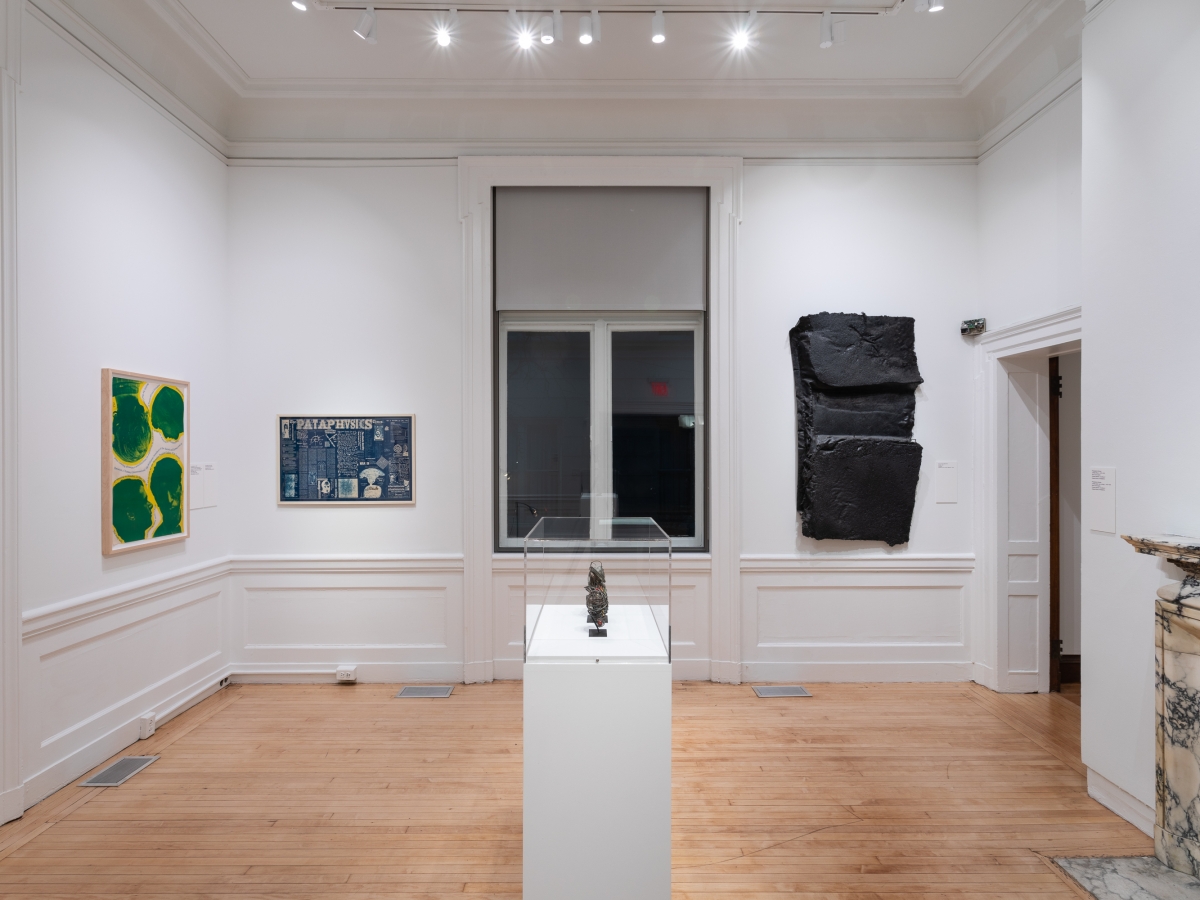
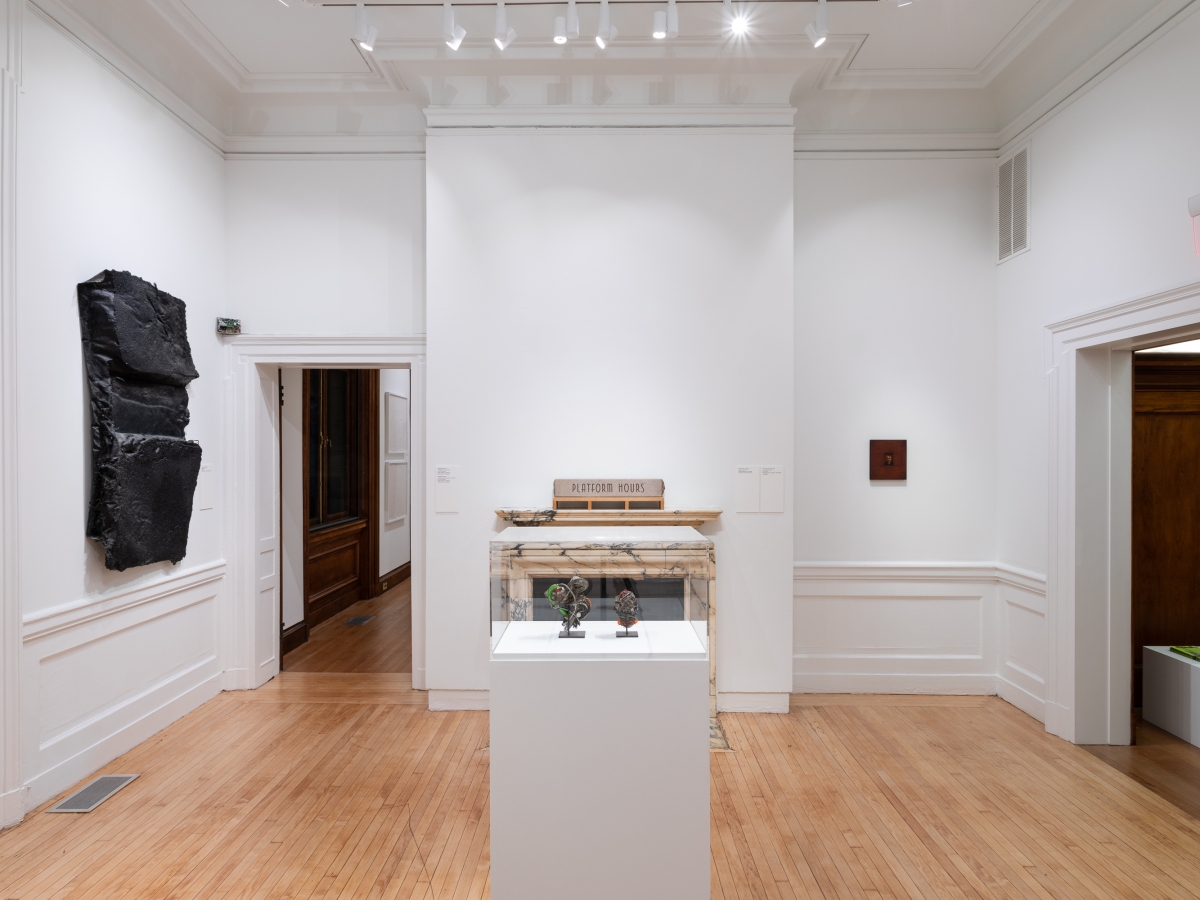
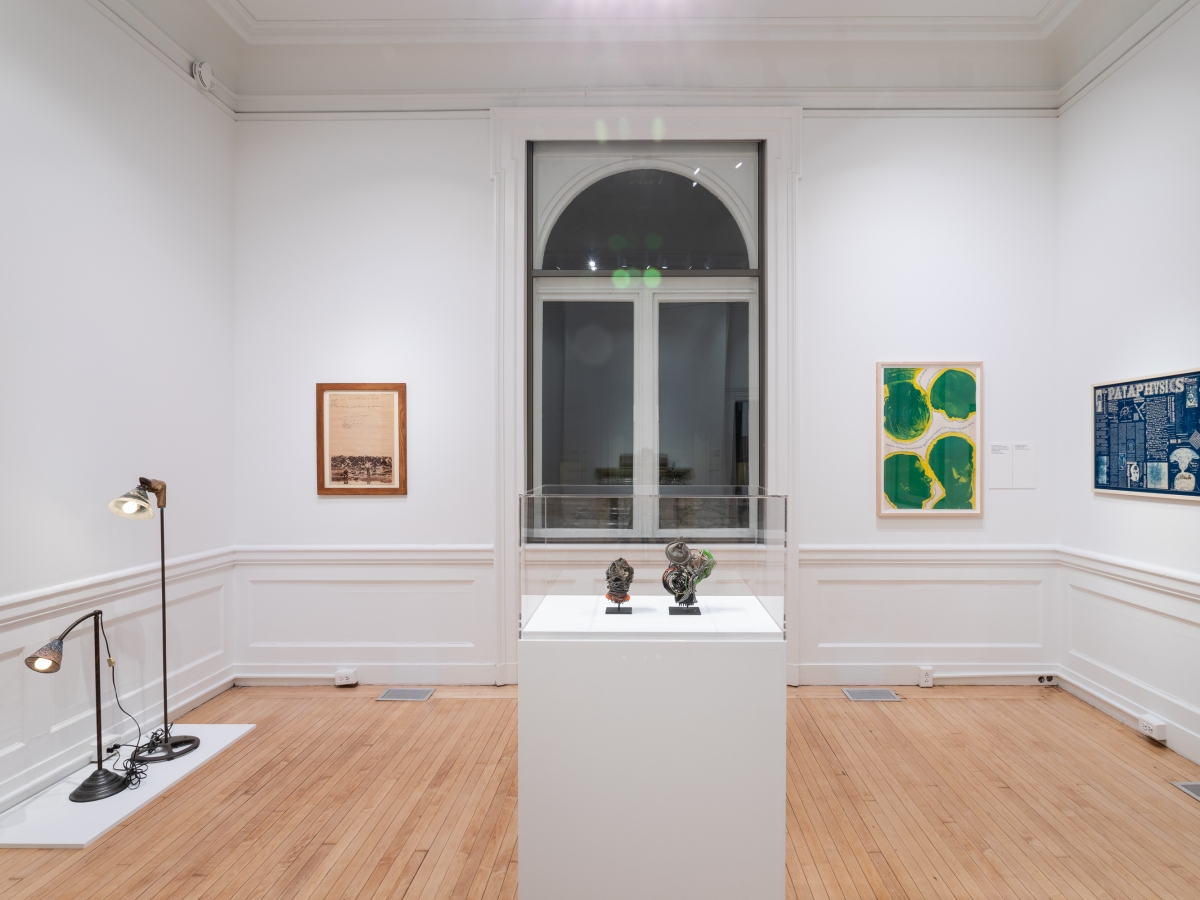
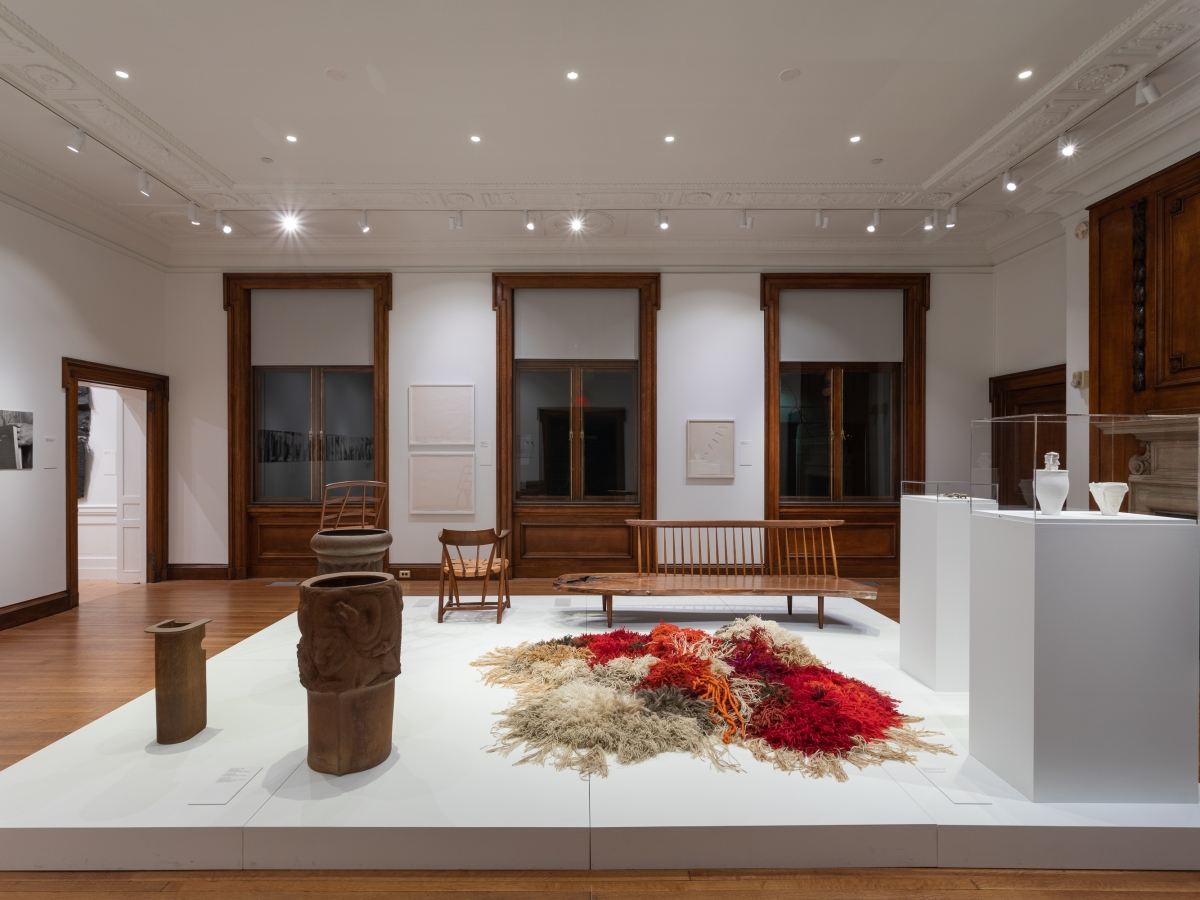
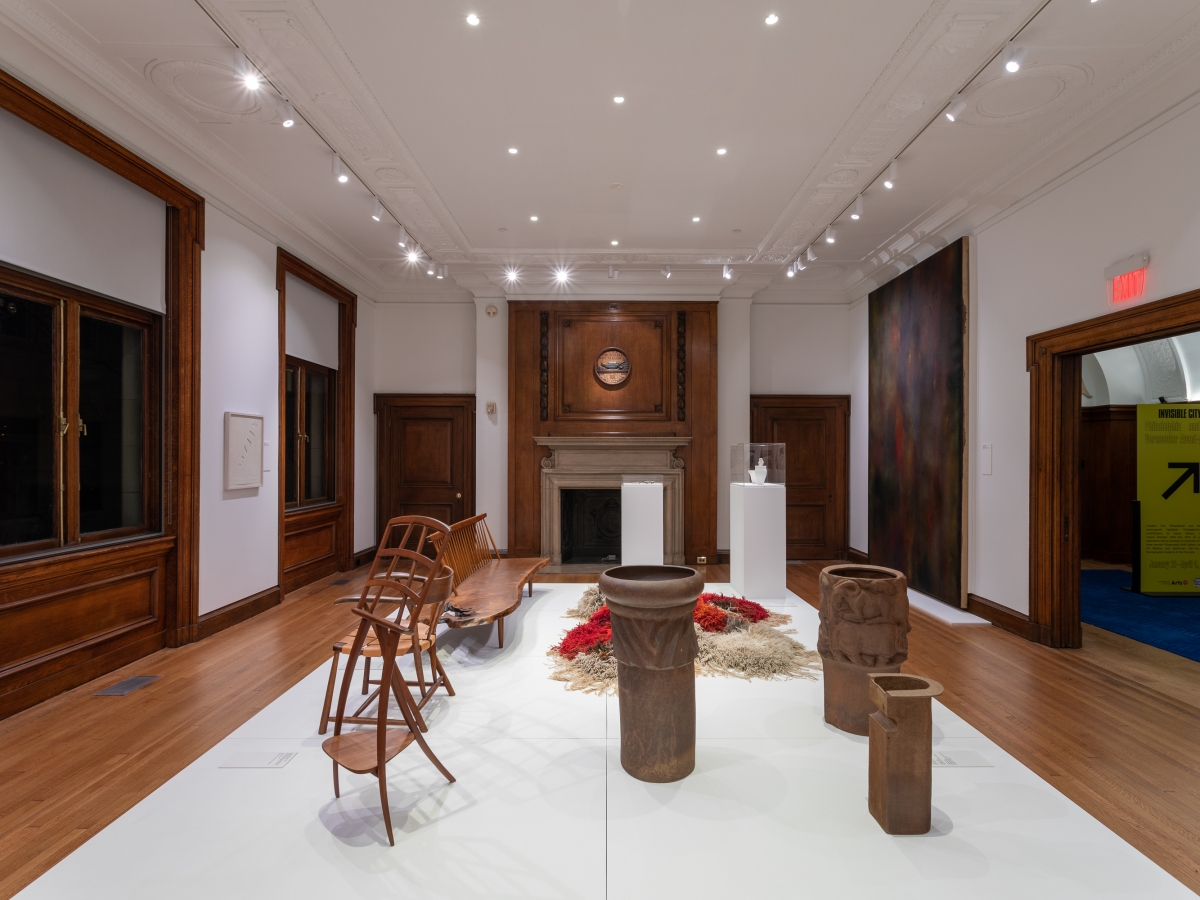
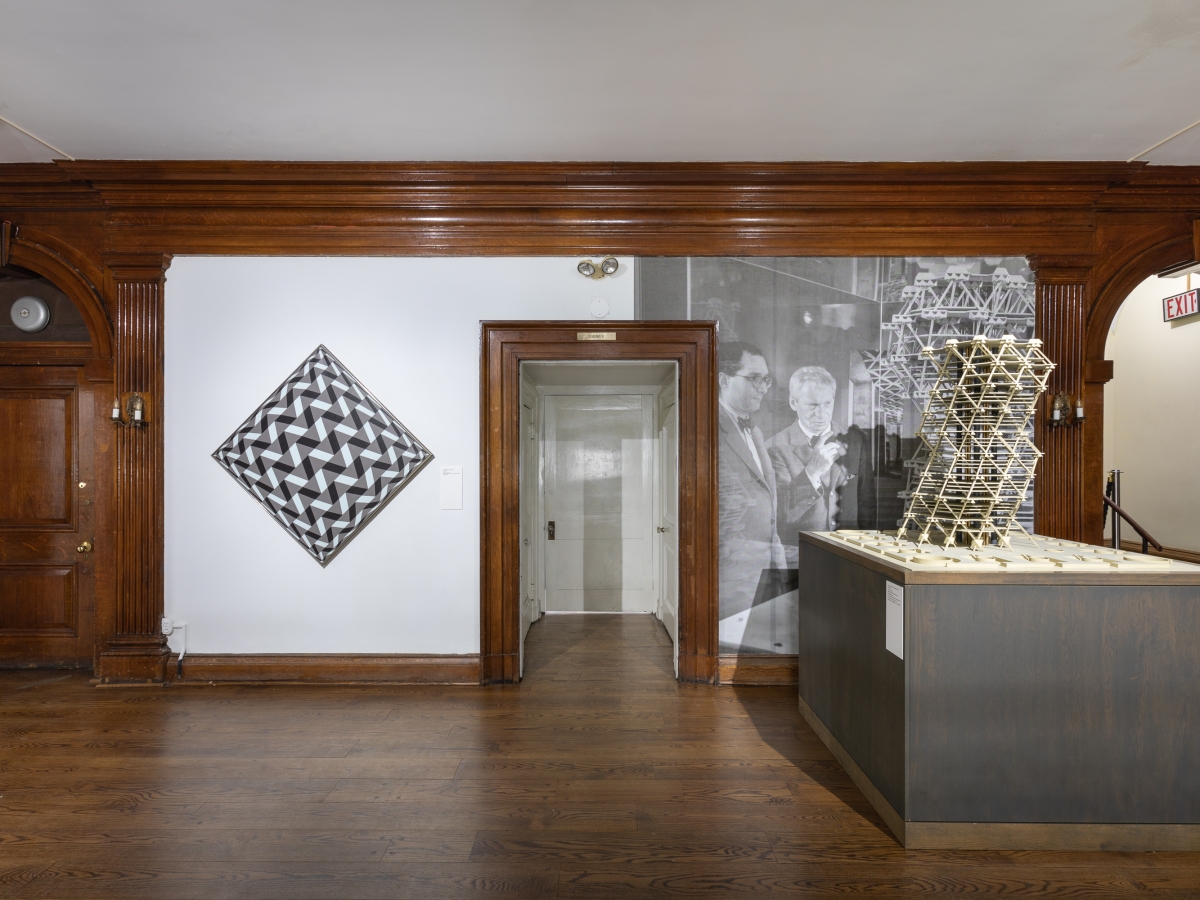
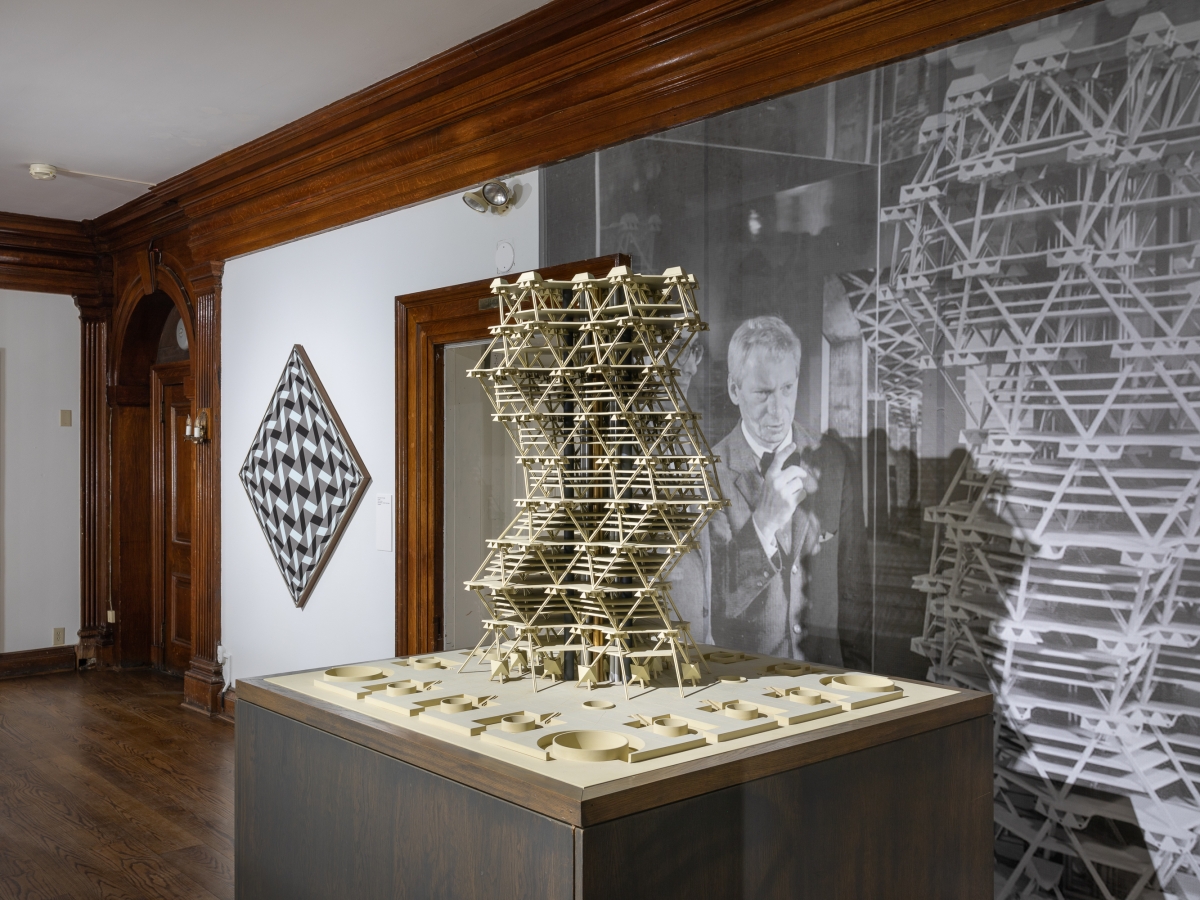
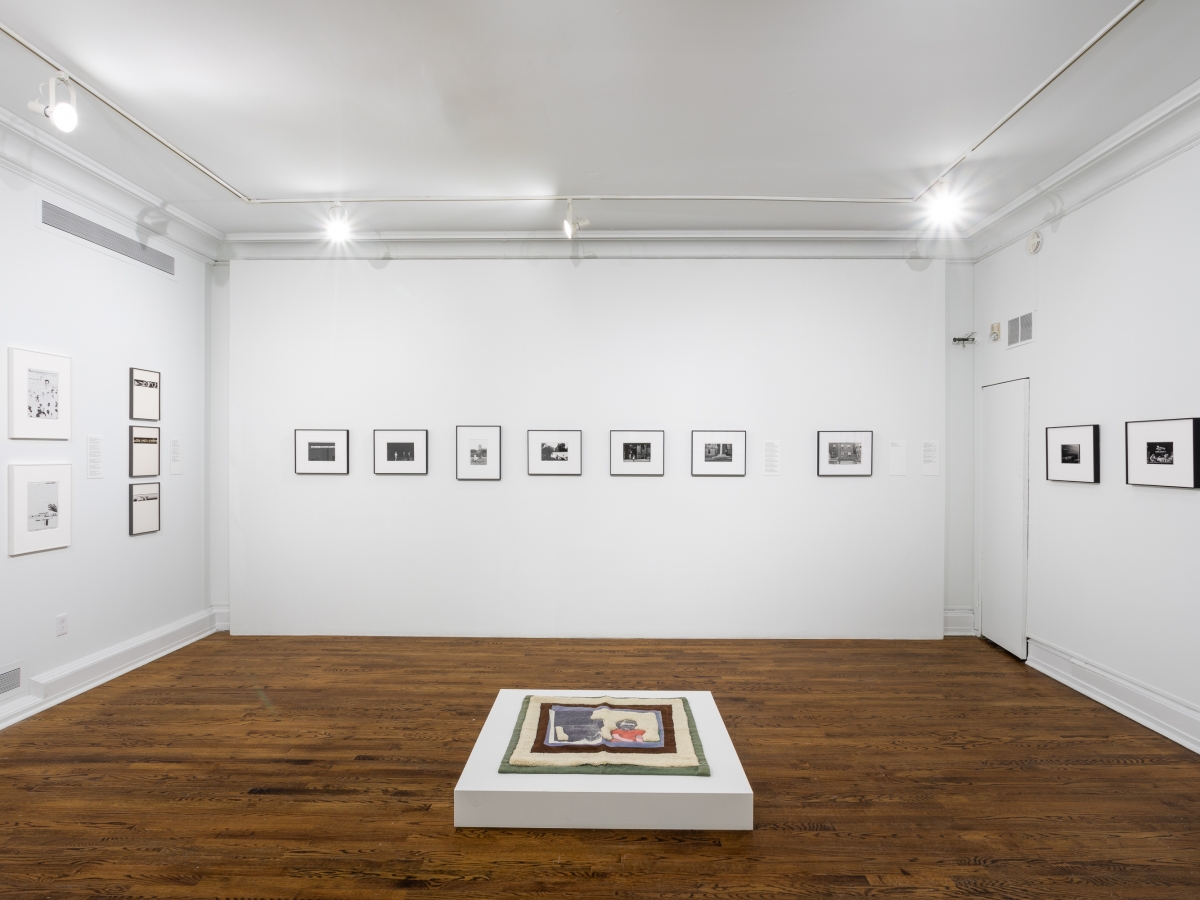
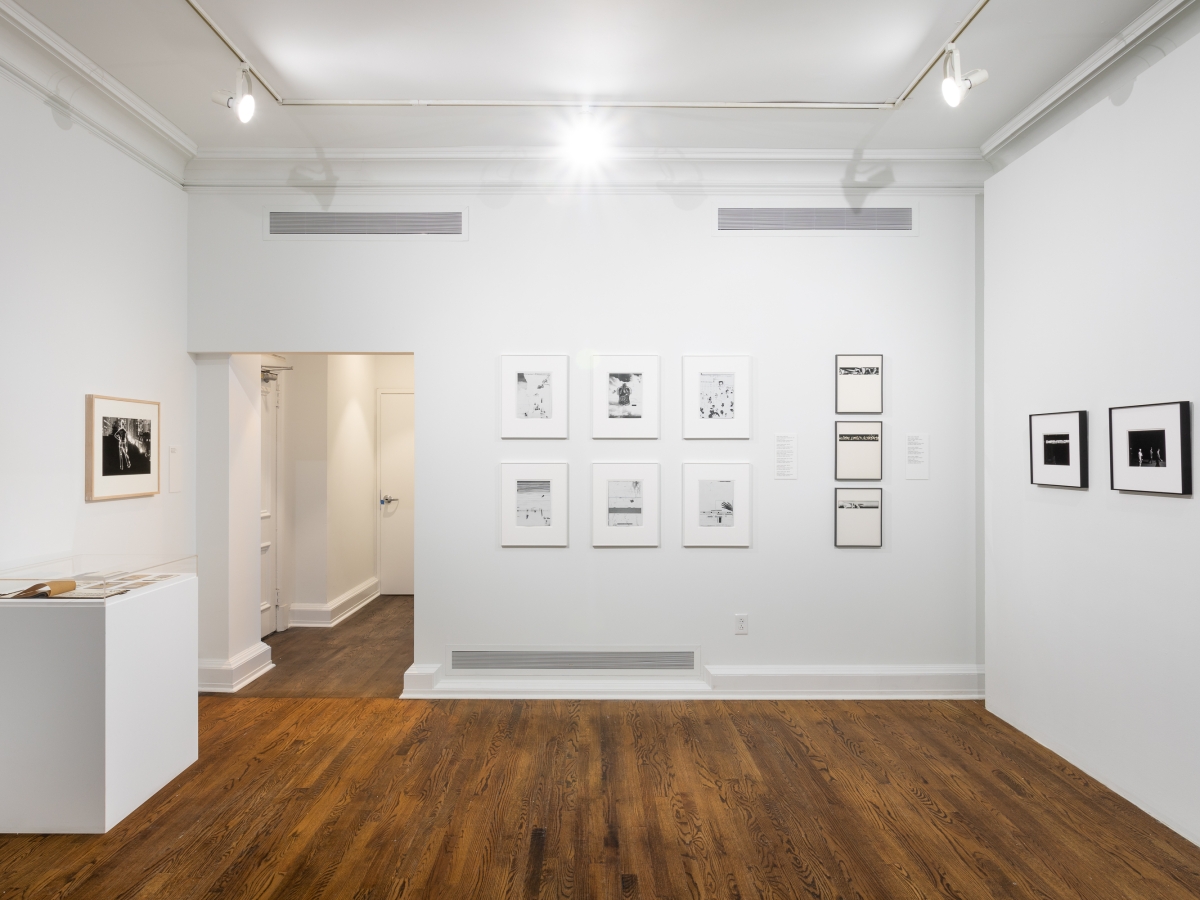
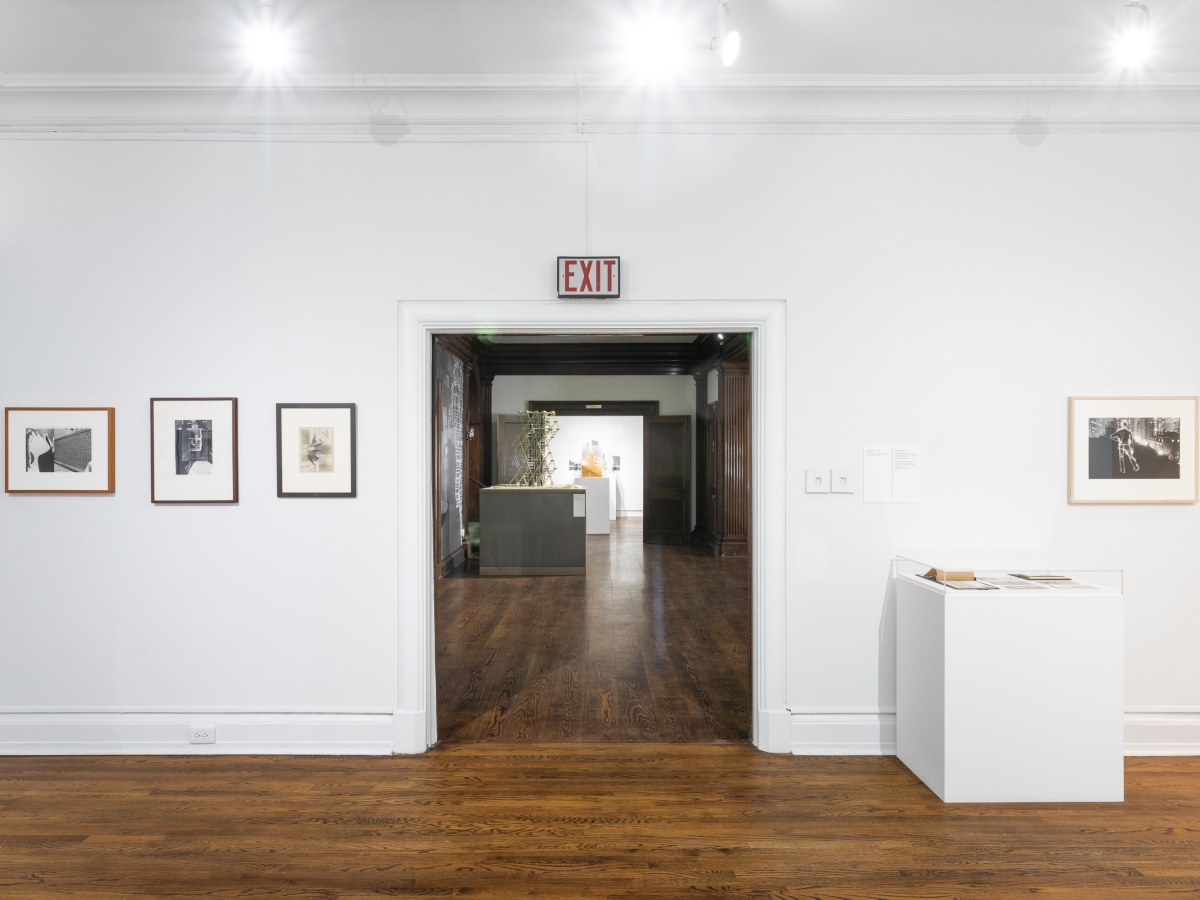
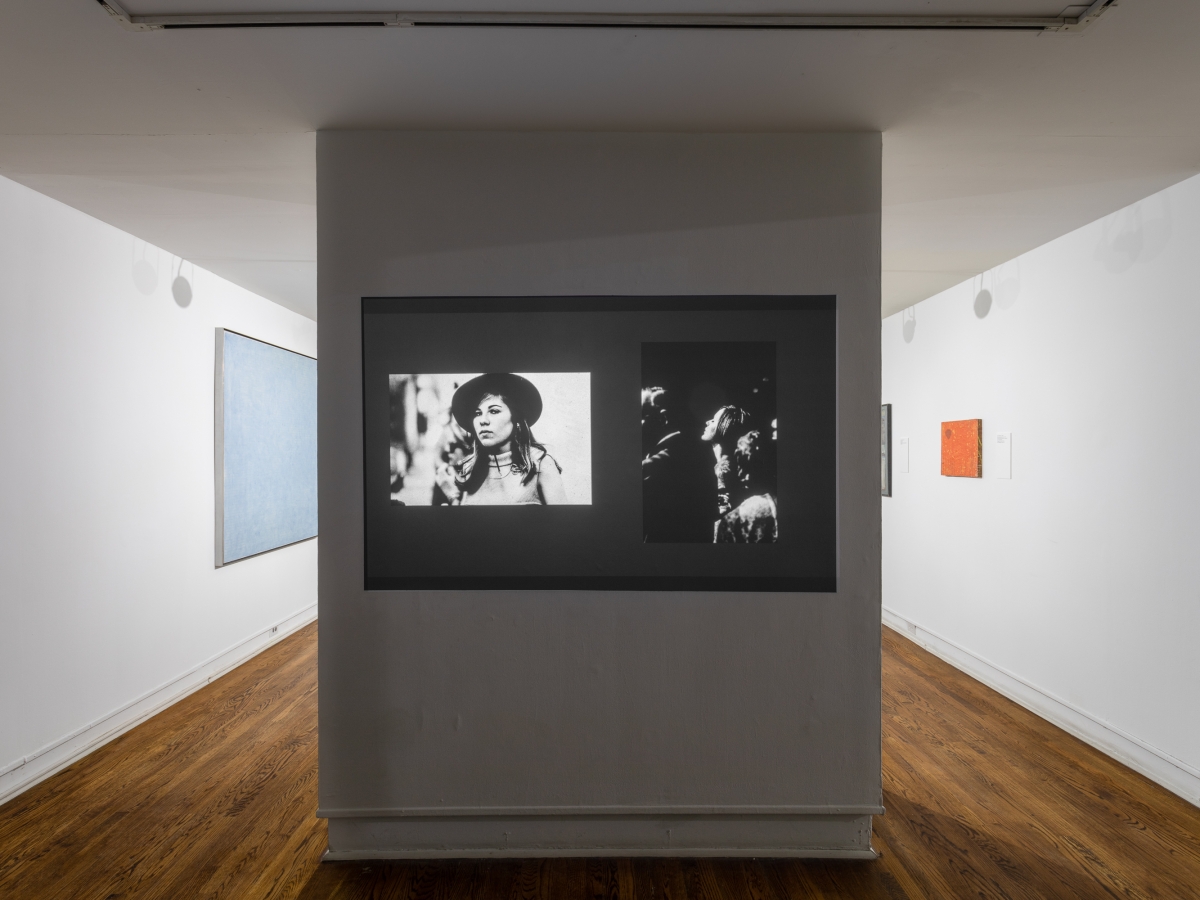
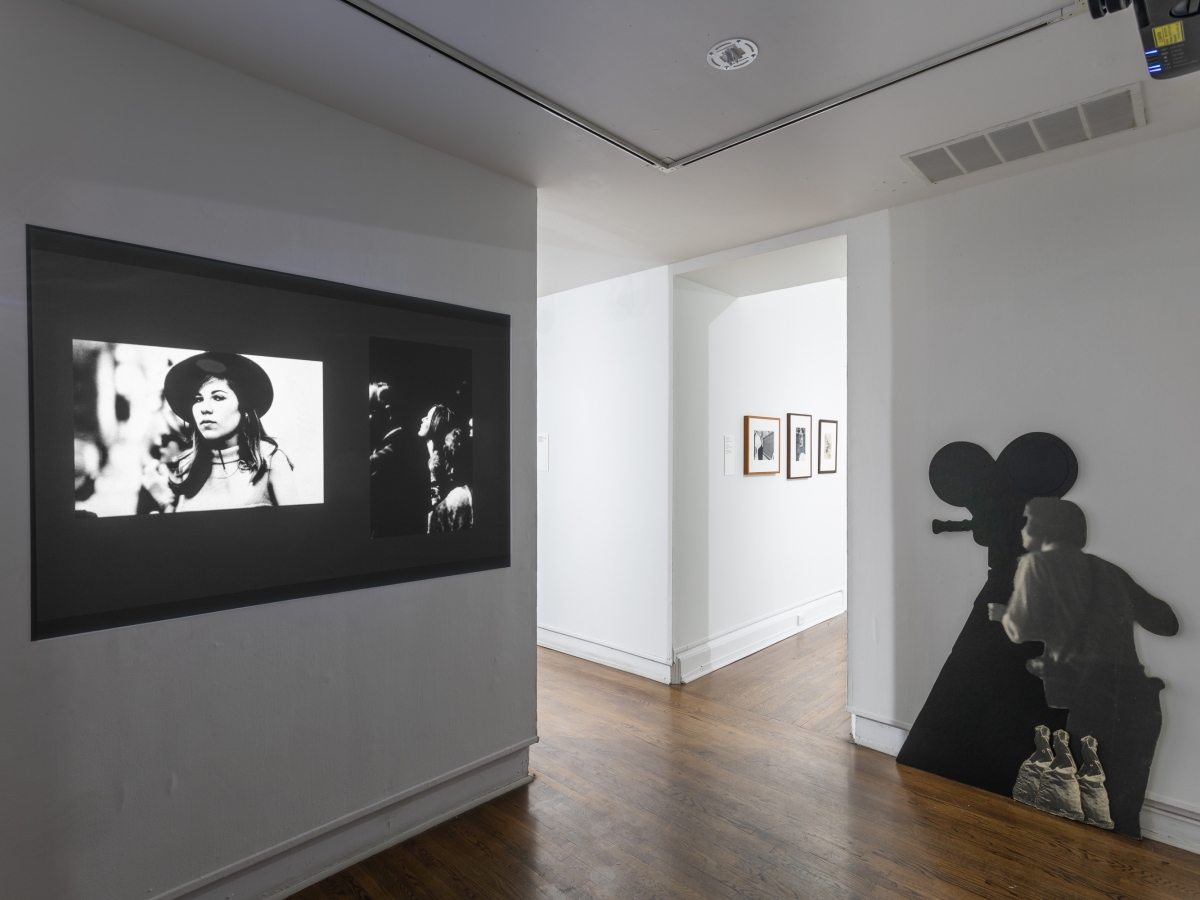
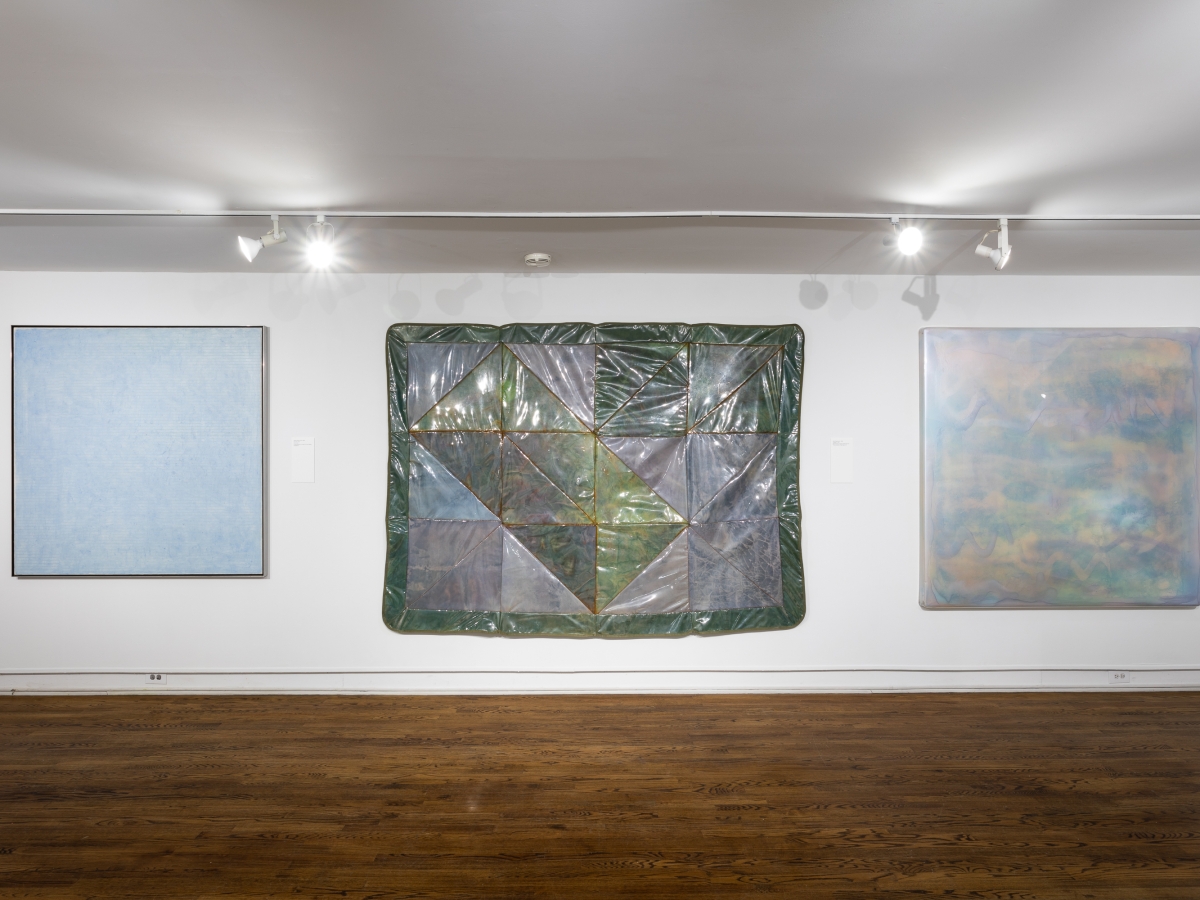
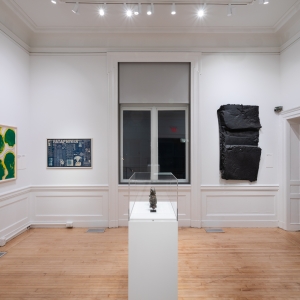
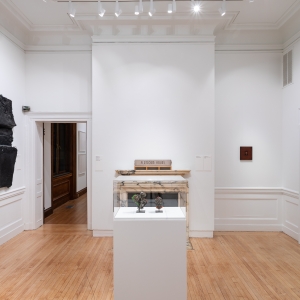
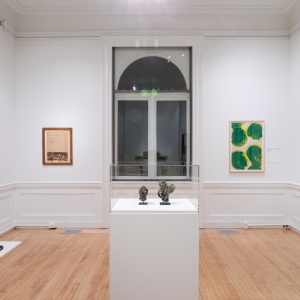
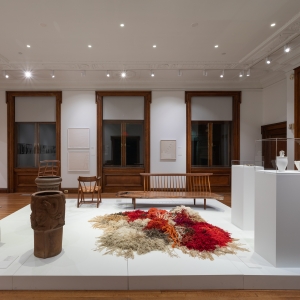
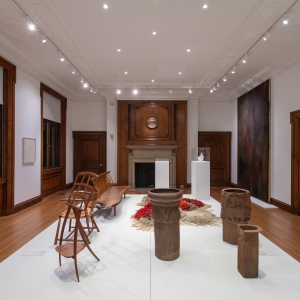
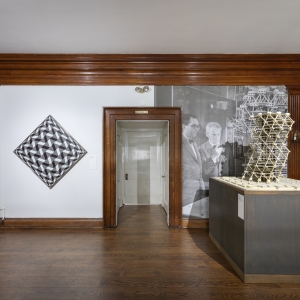
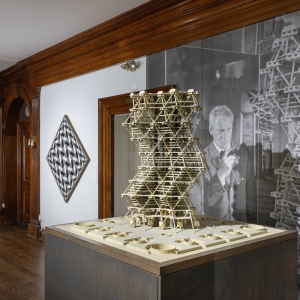
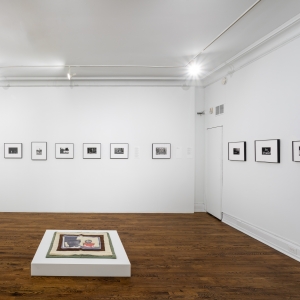
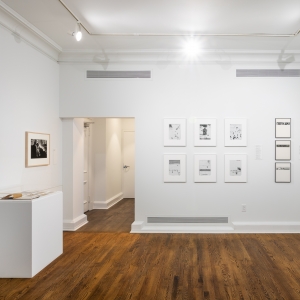
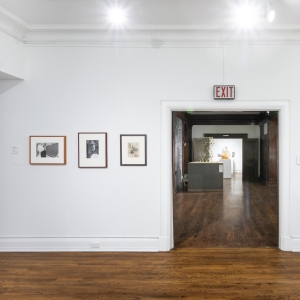
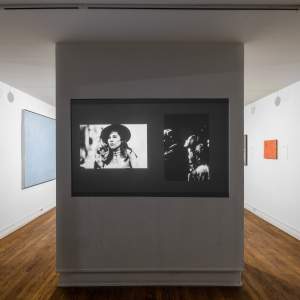
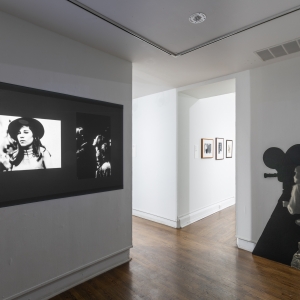
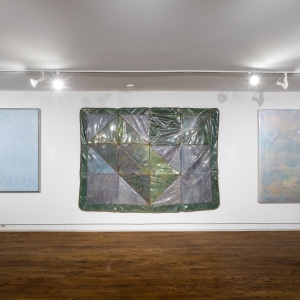
Invisible City: Philadelphia and the Vernacular Avant-garde has been supported by The Pew Center for Arts & Heritage
